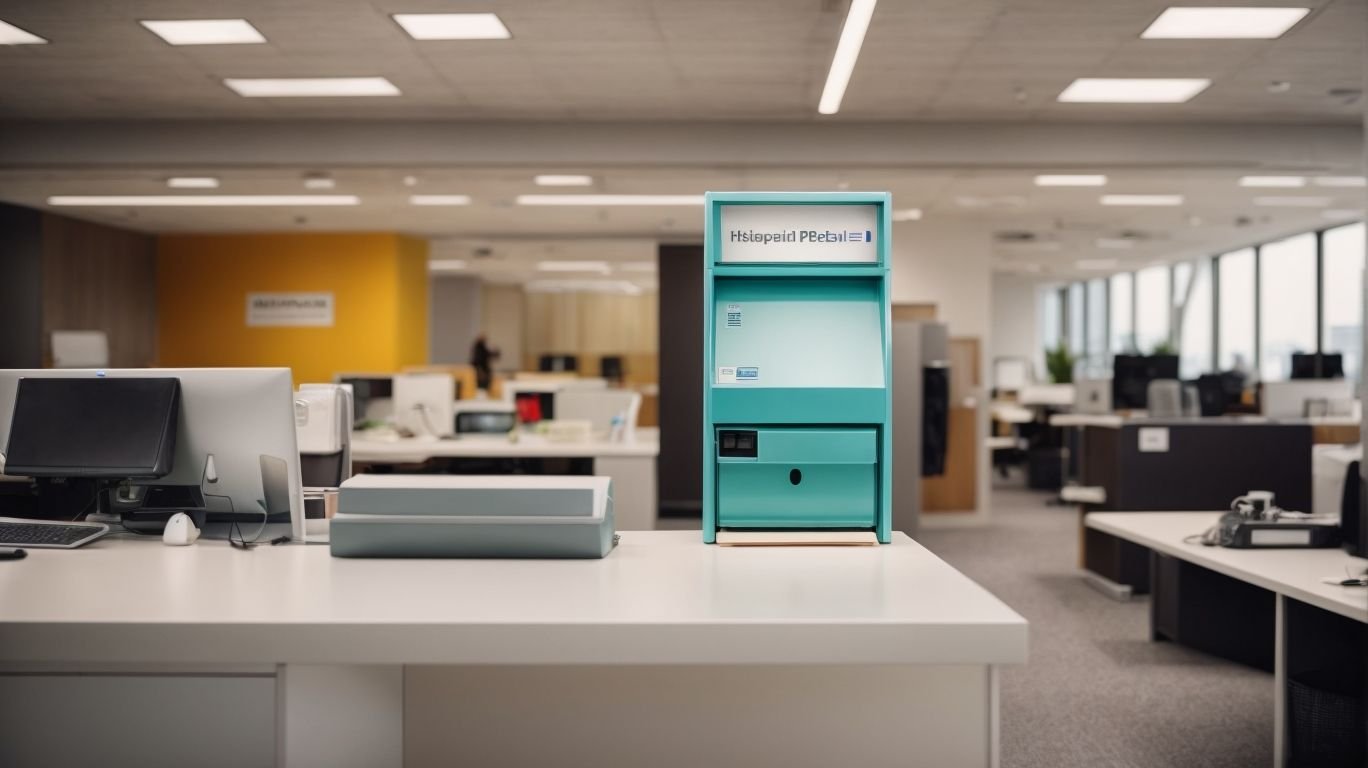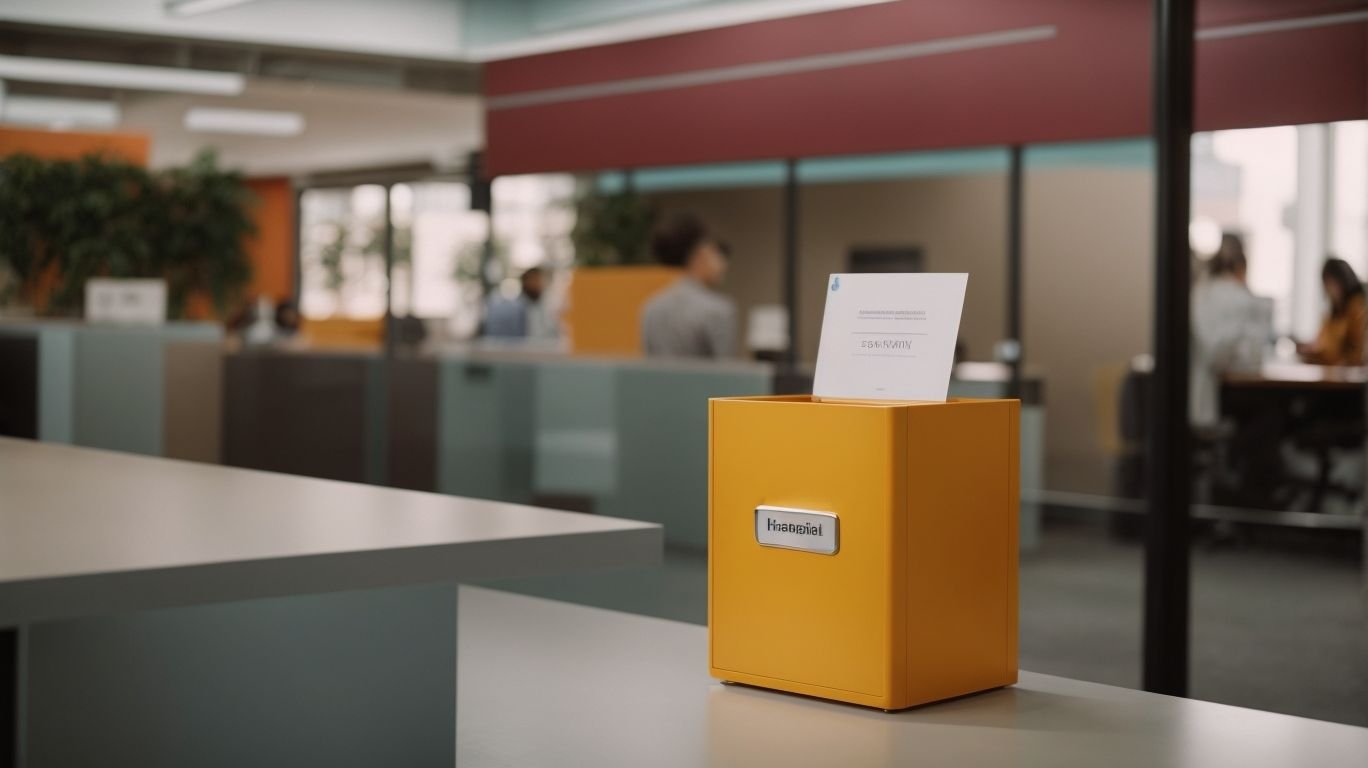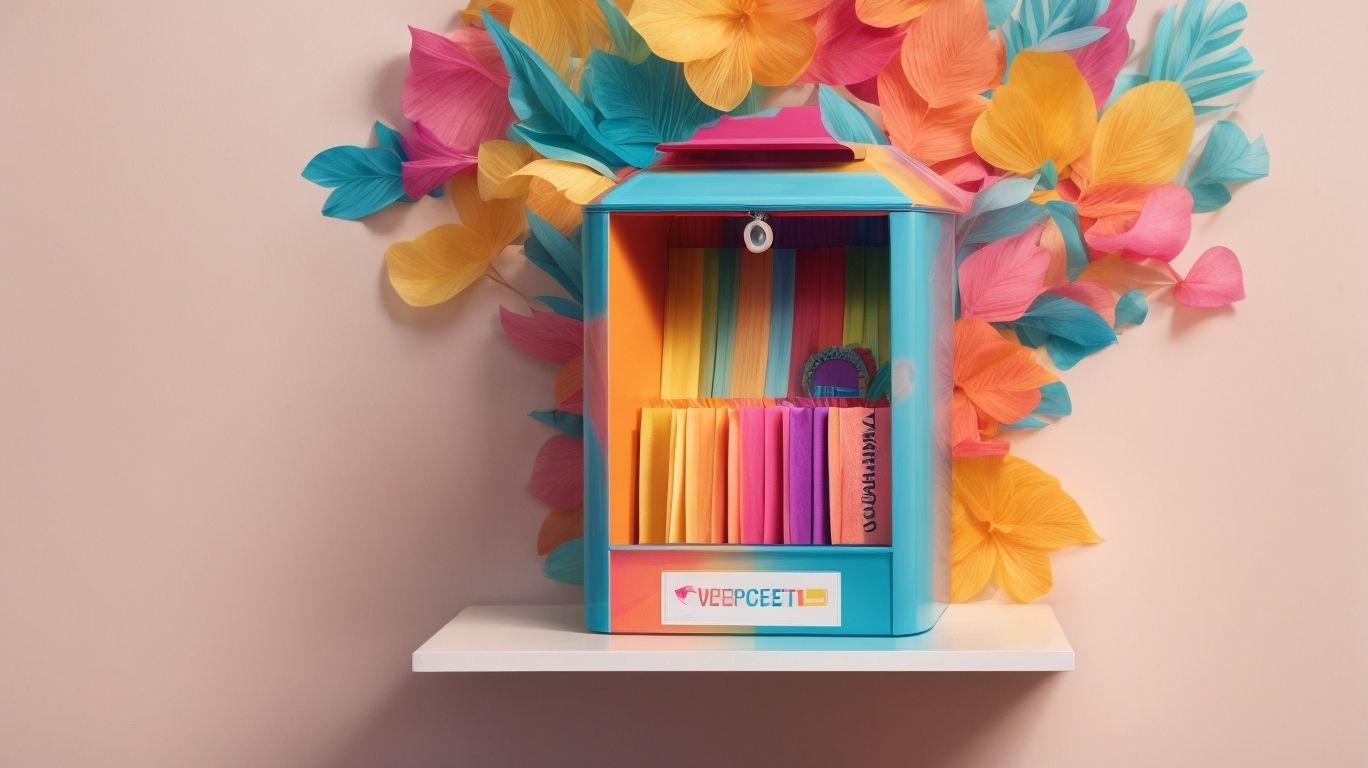In any workplace, employee feedback is crucial for creating a positive and productive environment. However, employees may not always feel comfortable sharing their thoughts and ideas directly with their superiors. This is where a suggestion box comes in as a valuable tool for empowering employee voices and improving the overall workplace culture.
A suggestion box is a physical or digital platform where employees can submit their ideas, suggestions, and concerns anonymously. It provides a safe and non-judgmental space for employees to share their thoughts without fear of repercussions. A study conducted by the Harvard Business Review found that suggestion boxes can boost employee satisfaction and engagement.
Implementing a suggestion box in the workplace can have numerous benefits, including:
- Encourages Employee Engagement: When employees feel their opinions are valued and heard, they are more likely to be engaged and motivated in their work.
- Fosters a Culture of Open Communication: A suggestion box promotes open communication and creates a sense of inclusivity within the workplace.
- Improves Company Processes and Practices: Valuable feedback from employees can lead to improvements in company processes and practices, ultimately increasing efficiency and productivity.
- Increases Employee Satisfaction and Retention: A suggestion box gives employees a sense of ownership and empowerment, leading to higher job satisfaction and retention rates.
Creating an effective suggestion box program involves clearly defining its purpose and goals, ensuring confidentiality and anonymity, promoting participation, and establishing a review and implementation system. Several companies have successfully implemented suggestion box programs, including Google, Toyota, and Starbucks.
In conclusion, a suggestion box can have a significant impact on employee empowerment and workplace culture. Encouraging and valuing employee feedback is crucial for the success of any organization, and a suggestion box is an effective and simple way to achieve this.
The Importance of Employee Feedback

Photo Credits: Humanresources-Hr.Com by Charles Martinez
Employee feedback is essential for the success of any organization. It allows employees to share their ideas, concerns, and suggestions, leading to improved communication, productivity, and morale. By providing a platform for employees to express their opinions and contribute to decision-making, organizations can create a more inclusive and engaged work environment.
Moreover, employee feedback plays a crucial role in identifying areas for improvement and promoting innovation. Through feedback, companies can uncover inefficiencies, address issues, and implement changes that enhance processes and workflows. When employees feel heard and valued, they are more likely to be motivated and committed to their work.
A study conducted by Gallup found that organizations that prioritize and act upon employee feedback experience higher levels of employee engagement and productivity. This highlights the importance of employee feedback in driving positive outcomes for both employees and the organization as a whole.
Fact: According to a Harvard Business Review study, companies that regularly solicit feedback from employees have 14.9% lower turnover rates compared to those that do not prioritize employee feedback.
What Is a Suggestion Box?

Photo Credits: Humanresources-Hr.Com by Jack Young
A suggestion box is a physical or digital platform that allows employees to anonymously or openly submit their ideas, feedback, and suggestions. It serves as a safe space for employees to express their thoughts, contribute to decision-making processes, and enhance workplace conditions. The main purpose of a suggestion box is to promote open communication, employee engagement, and continuous improvement within a company.
It enables employees to share their insights, innovative ideas, and problem-solving solutions related to their work. These suggestions can range from minor improvements in daily processes to significant changes within the organization. By implementing a suggestion box, companies demonstrate their dedication to valuing employee input and empowering their workforce to actively participate in shaping the company’s success.
In summary, a suggestion box is a valuable tool that encourages employee participation, fosters a sense of ownership and empowerment, and contributes to the overall growth and success of an organization.
How Does a Suggestion Box Work?

Photo Credits: Humanresources-Hr.Com by Jonathan Martinez
A suggestion box is a powerful tool that allows employees to share their ideas, concerns, and suggestions with management. Here is a step-by-step guide on how a suggestion box works:
- Placement: Choose a visible and accessible location for the suggestion box, ensuring that employees can easily find it and submit their suggestions.
- Instructions: Clearly communicate how the suggestion box works and what types of suggestions are encouraged.
- Anonymity: Assure employees that their suggestions will be kept confidential and that no one will be able to trace them back.
- Regular Check-ins: Assign someone from management to regularly check the suggestion box and review the submitted suggestions.
- Evaluation: Evaluate each suggestion carefully, considering its feasibility, potential impact, and alignment with company values and goals.
- Feedback: Provide feedback to the employees who submitted suggestions, acknowledging their ideas and explaining any actions taken.
Pro-tip: Encourage employee participation by regularly highlighting successful suggestions and implementing changes based on those suggestions. This will create a culture of open communication and continuous improvement within the workplace.
The Benefits of Implementing a Suggestion Box

Photo Credits: Humanresources-Hr.Com by Lawrence Young
In today’s fast-paced and competitive work environment, it is essential for companies to continuously seek ways to improve and stay ahead. One effective method that has been gaining popularity is the implementation of a suggestion box. This section will discuss the various benefits that come with having a suggestion box in the workplace. From encouraging employee engagement to improving company processes, we’ll explore how this simple tool can have a significant impact on the overall success and satisfaction of a company.
1. Encourages Employee Engagement
Encouraging employee engagement is a crucial aspect of implementing a suggestion box program in the workplace. Here are the steps to achieve this:
- Communicate the purpose and benefits: Clearly define why employee engagement is important and how their suggestions can directly impact the company’s success.
- Create a supportive environment: Foster a culture that values and encourages employee input. Ensure that employees feel comfortable and safe to share their ideas without fear of judgment or retribution.
- Promote active participation: Actively promote the suggestion box program through regular communication channels, such as team meetings, emails, or bulletin boards. Encourage employees to submit their suggestions and provide incentives or recognition for their contributions.
- Provide timely feedback: Establish a system to promptly acknowledge and respond to each suggestion. Keep employees informed about the progress and outcomes of their ideas, whether implemented or not.
By following these steps, organizations can cultivate a culture of employee engagement, empowering their workforce and driving positive change within the company.
2. Fosters a Culture of Open Communication
Fostering a culture of open communication is a crucial aspect of implementing a suggestion box program in the workplace. It encourages employees to freely express their ideas, concerns, and suggestions, leading to improved collaboration and innovation. Here are the steps to foster a culture of open communication:
- Lead by example: Managers and leaders should actively encourage and participate in open communication to set a positive tone.
- Create a safe environment: Establish a non-judgmental and supportive atmosphere where employees feel comfortable sharing their thoughts without fear of repercussions.
- Communicate the purpose: Clearly communicate why open communication is important and how it benefits both individuals and the organization as a whole.
- Listen actively: Encourage active listening by managers and peers, showing respect for different viewpoints and ideas.
- Provide feedback: Regularly provide constructive feedback and acknowledgment to employees who contribute to open communication.
- Break down hierarchies: Encourage employees at all levels to freely communicate with each other, breaking down any barriers between different levels of the organization.
- Implement regular feedback sessions: Conduct regular feedback sessions where employees can share their thoughts, ask questions, and receive updates on implemented suggestions.
By following these steps, a suggestion box program can foster a culture of open communication, promoting collaboration and driving positive change within the organization.
3. Improves Company Processes and Practices
Implementing a suggestion box in the workplace can bring several benefits, including improvements in company processes and practices. Here are steps to successfully improve company processes and practices through a suggestion box program:
- Clearly define the purpose and goals of the suggestion box program. This ensures that employees understand the specific areas where their suggestions can contribute to improving company processes and practices.
- Ensure confidentiality and anonymity. Employees should feel comfortable expressing their ideas without fear of backlash or judgment.
- Promote and encourage participation. Regularly remind employees about the suggestion box, provide incentives for participation, and recognize and celebrate successful suggestions.
- Establish a system for review and implementation. Create a designated team responsible for reviewing suggestions, assessing their feasibility, and implementing viable ideas.
By following these steps, companies can effectively leverage their suggestion box programs to improve their processes and practices, leading to increased efficiency and overall success.
4. Increases Employee Satisfaction and Retention
To enhance employee satisfaction and retention, implementing a suggestion box program can be highly effective. Here are the steps to create an impactful suggestion box program:
- Clearly Define the Purpose and Goals: Establish a clear objective for the program, such as gathering ideas for process improvement or promoting employee engagement.
- Ensure Confidentiality and Anonymity: Assure employees that their suggestions will be kept confidential and allow for anonymous submissions to encourage honest feedback.
- Promote and Encourage Participation: Create awareness about the program through internal communication channels, such as email, intranet, or employee meetings, and emphasize the benefits of participation.
- Establish a System for Review and Implementation: Set up a process for reviewing submitted suggestions, involving relevant stakeholders, and implementing feasible ideas. Provide regular updates to employees on the progress and outcomes.
By following these steps, organizations can create a supportive environment where employees’ voices are valued, leading to increased satisfaction and retention.
How to Create an Effective Suggestion Box Program

Photo Credits: Humanresources-Hr.Com by Elijah Mitchell
To truly empower the voices of employees in the workplace, a well-designed suggestion box program is essential. In this section, we will discuss the key elements of creating an effective suggestion box program. These include clearly defining the purpose and goals, ensuring confidentiality and anonymity, promoting and encouraging participation, and establishing a system for reviewing and implementing suggestions. By following these guidelines, organizations can create a platform for employees to share their ideas and contribute to positive change within the workplace.
1. Clearly Define the Purpose and Goals
When implementing a suggestion box program, it is crucial to have a clear understanding of its purpose and goals. This helps provide direction, focus, and clarity for both employees and the organization. Here are the steps to follow:
- Identify the purpose: Determine the specific reasons for implementing the suggestion box program. Is it to improve employee engagement, gather innovative ideas, or enhance company processes?
- Establish clear goals: Define measurable and achievable objectives that align with the overall organizational strategy. For example, increasing employee participation by 20% or implementing three employee-generated ideas per quarter.
- Create guidelines: Develop guidelines for submitting suggestions, including the format, language, and eligibility criteria.
- Communicate the purpose and goals: Clearly communicate the purpose and goals of the suggestion box program to all employees through various channels, such as emails, posters, and team meetings.
By following these steps, organizations can ensure that their suggestion box program is well-defined, focused, and aligned with their overall objectives.
2. Ensure Confidentiality and Anonymity
Ensuring confidentiality and anonymity is essential when implementing a suggestion box program in the workplace. This fosters a safe and secure environment for employees to freely share their ideas and concerns without fear of repercussions. To achieve this, here are some steps to follow:
- Establish clear guidelines: Communicate the importance of confidentiality and anonymity to all employees.
- Use a designated box or online platform: Provide a secure and private method for employees to submit their suggestions anonymously.
- Maintain confidentiality: Assign a trusted individual or team to handle and review suggestions, ensuring employee identities remain confidential.
- Protect data: Implement appropriate measures to safeguard any personal or sensitive information shared through the suggestion box.
By following these steps, employers can cultivate a culture of trust and openness, encouraging employees to openly express their ideas and concerns. This can result in improved employee engagement, increased productivity, and a positive work environment.
3. Promote and Encourage Participation
To promote and encourage participation in a suggestion box program, follow these steps:
- Clearly communicate the purpose and goals of the program to employees. Explain how their suggestions can contribute to improving the workplace.
- Promote inclusivity by ensuring that the suggestion box is accessible to all employees. Consider using digital platforms or physical suggestion boxes placed in visible and convenient locations.
- Encourage employees to actively participate by creating a supportive and safe environment. Assure confidentiality and anonymity to alleviate concerns about repercussions or judgment.
- Implement an effective communication strategy to raise awareness about the program. Utilize multiple channels such as email, bulletin boards, and team meetings to reach all employees.
- Recognize and reward employees for their valuable contributions. Acknowledge suggestions, and publicly celebrate successful implementations to motivate further participation.
- Regularly evaluate and provide feedback on the suggestions received. Keep employees informed about the progress and outcomes of their suggestions to demonstrate that their input is valued.
By following these steps, organizations can foster a culture of active participation and engagement in their suggestion box programs.
4. Establish a System for Review and Implementation
To effectively review and implement employee suggestions, it is important to establish a structured system. This can be achieved by following these steps:
- Assign a designated team to review and evaluate suggestions from employees.
- Create clear evaluation criteria to assess the feasibility, impact, and alignment of suggestions with organizational goals.
- Establish a regular schedule for reviewing suggestions to ensure timely evaluation and feedback.
- Communicate the review process to employees, promoting transparency and encouraging their continued participation.
- Prioritize and categorize suggestions based on their potential impact and feasibility.
- Develop an action plan for implementing selected suggestions, assigning responsibilities and setting deadlines.
- Communicate the outcomes of the implemented suggestions to employees, highlighting the positive impact and recognizing contributors.
By implementing a well-structured system, employee suggestions can be carefully evaluated and valuable ideas can be put into action. This not only shows that their voices are heard and valued, but also contributes to a positive work environment.
Real-Life Examples of Successful Suggestion Box Programs

Photo Credits: Humanresources-Hr.Com by Henry Anderson
In the world of business, it is crucial to foster a culture of open communication and innovation. One way to achieve this is through implementing a suggestion box program in the workplace. In this section, we will explore real-life examples of successful suggestion box programs and how they have positively impacted the companies that have implemented them. From Google’s “Googlegeist” program to Toyota’s “Idea Box” program to Starbucks’ “My Starbucks Idea” program, we will see how these companies have embraced the power of employee suggestions and incorporated them into their business strategies.
1. Google’s “Googlegeist” Program
Google’s “Googlegeist” program is a prime example of a successful suggestion box program that empowers employees and fosters a culture of innovation. This program encourages employees to share their ideas, feedback, and suggestions to improve the workplace and company processes. To create a similarly effective suggestion box program, organizations can follow these steps based on Google’s “Googlegeist” program:
- Clearly define the purpose and goals of the program, ensuring that employees understand the significance of their input and how it can contribute to positive changes.
- Ensure confidentiality and anonymity, allowing employees to freely express their ideas without fear of judgment or retribution.
- Promote and encourage participation by creating awareness through internal communications, meetings, and incentives.
- Establish a system for reviewing and implementing suggestions, involving relevant stakeholders and providing timely feedback on the status of each suggestion.
By following these steps, organizations can create an effective suggestion box program like Google’s “Googlegeist,” empowering employees and benefiting from their valuable insights and ideas.
2. Toyota’s “Idea Box” Program
Toyota’s “Idea Box” program is a prime example of a successful suggestion box implementation in the workplace. This program encourages employees to share their ideas and suggestions to enhance company processes and practices. The “Idea Box” program at Toyota has several essential components that contribute to its success.
- Firstly, Toyota clearly defines the purpose and objectives of the program. They communicate to employees that their ideas are highly valued and that they have the ability to make a significant impact on the company.
- Secondly, confidentiality and anonymity are guaranteed in the program. This enables employees to freely express their ideas without any fear of judgment or repercussions.
- Thirdly, Toyota actively promotes and encourages participation in the “Idea Box” program. They hold regular meetings and discussions to generate ideas and provide feedback on submitted suggestions.
- Finally, Toyota has a well-established system for evaluating and implementing employee suggestions. They have a dedicated team that assesses each idea and determines its feasibility and potential impact.
Overall, Toyota’s “Idea Box” program showcases the importance of empowering employees and fostering a culture of open communication and innovation in the workplace.
3. Starbucks’ “My Starbucks Idea” Program
Starbucks’ “My Starbucks Idea” program is a prime example of a successful suggestion box program that promotes employee engagement and fosters a culture of open communication. Through this program, Starbucks employees are able to share their ideas and suggestions for enhancing the company’s products, services, and operations.
The program operates through an online platform where employees can submit their ideas, comment on others’ ideas, and vote for their favorites.
The implementation of the “My Starbucks Idea” program has resulted in numerous benefits for the company. Firstly, it boosts employee engagement by providing them with a platform to contribute their insights and feel valued. Secondly, it fosters a culture of open communication by giving employees a voice and encouraging dialogue. Thirdly, it improves company processes and practices by implementing innovative ideas suggested by employees. Lastly, it enhances employee satisfaction and retention by showing that their ideas are taken seriously and can make a significant impact.
To create a successful suggestion box program similar to Starbucks’, it is crucial to:
- Clearly define the program’s purpose and goals
- Ensure confidentiality and anonymity
- Promote and encourage participation
- Establish a system for reviewing and implementing ideas
By empowering employees through a suggestion box program, companies can tap into the valuable insights and ideas of their workforce, leading to continuous improvement and success.
Frequently Asked Questions
1. What is a suggestion box and how can it impact workplace engagement?
A suggestion box is a tool used in businesses to gather feedback and ideas from employees. It can be physical or virtual and can impact workplace engagement by creating an inclusive environment where employees feel empowered to share their opinions and ideas.
2. How can a physical or virtual employee suggestion box be a valuable asset to a company’s success?
A physical or virtual employee suggestion box can be a valuable asset to a company’s success by providing a space for anonymous feedback, encouraging open communication, and identifying and addressing issues within the company.
3. What are some potential drawbacks of traditional suggestion boxes?
Some potential drawbacks of traditional suggestion boxes include lack of follow-up and action on suggestions, potential for misuse or abuse, and limited participation.
4. What are some tips for success with employee suggestion boxes?
Some tips for success with employee suggestion boxes include setting clear guidelines and expectations, promoting participation, and providing regular updates on the status of suggestions.
5. How can incorporating employee voice into a business lead to positive outcomes?
Incorporating employee voice into a business can lead to positive outcomes such as increased employee engagement and satisfaction, improved communication and collaboration, better employee retention, and enhanced customer satisfaction.
6. How can businesses foster a culture that encourages employee voice and feedback?
Businesses can foster a culture that encourages employee voice and feedback by creating an inclusive environment, conducting employee surveys and focus groups, holding regular meetings and forums, implementing suggestion boxes, and recognizing and rewarding employees.





